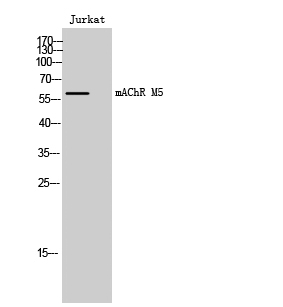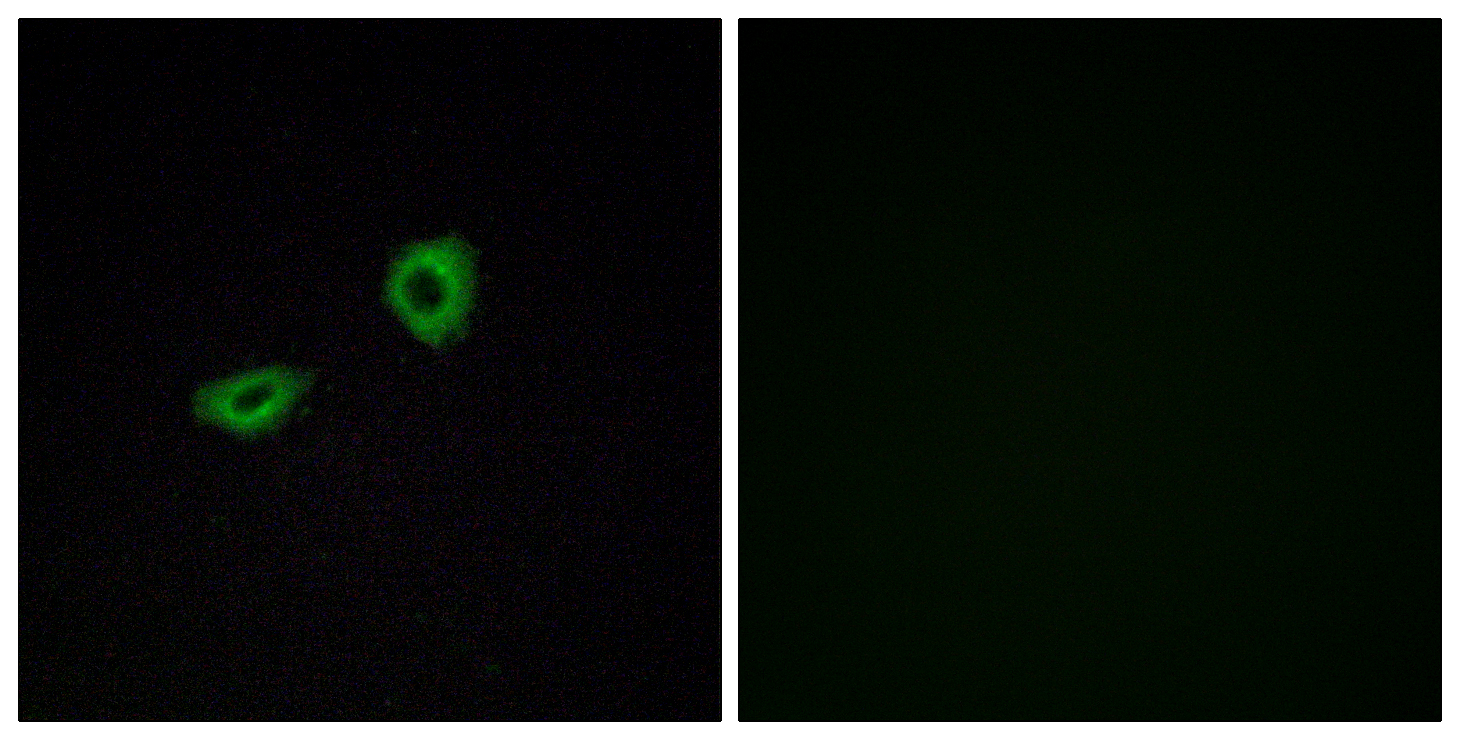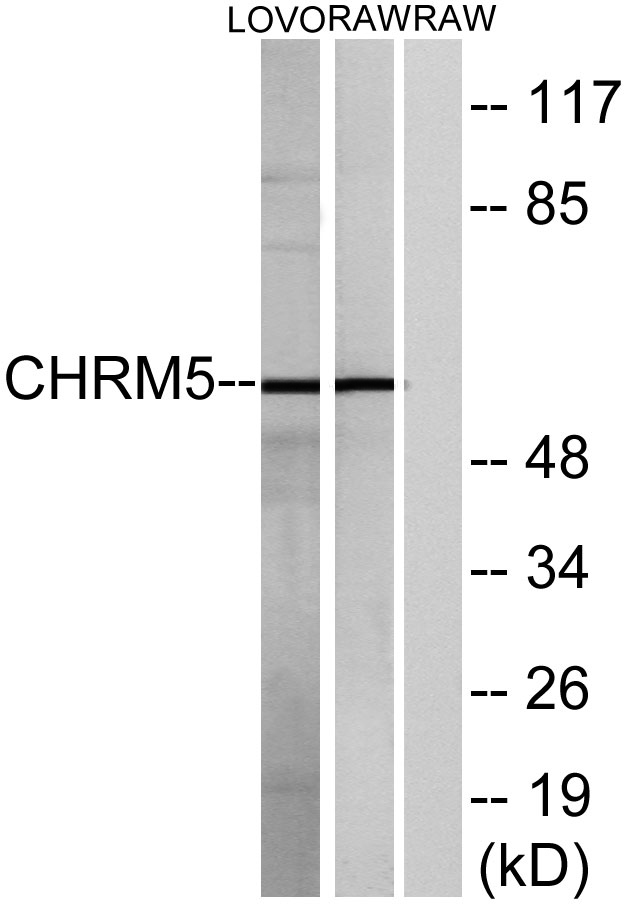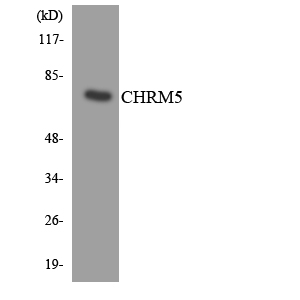mAChR M5 Polyclonal Antibody
- Catalog No.:YT2614
- Applications:WB;IF;ELISA
- Reactivity:Human;Rat;Mouse;
- Target:
- mAChR M5
- Fields:
- >>Calcium signaling pathway;>>Neuroactive ligand-receptor interaction;>>Cholinergic synapse;>>Regulation of actin cytoskeleton;>>Alzheimer disease;>>Pathways of neurodegeneration - multiple diseases
- Gene Name:
- CHRM5
- Protein Name:
- Muscarinic acetylcholine receptor M5
- Human Gene Id:
- 1133
- Human Swiss Prot No:
- P08912
- Mouse Swiss Prot No:
- Q920H4
- Immunogen:
- The antiserum was produced against synthesized peptide derived from human CHRM5. AA range:281-330
- Specificity:
- mAChR M5 Polyclonal Antibody detects endogenous levels of mAChR M5 protein.
- Formulation:
- Liquid in PBS containing 50% glycerol, 0.5% BSA and 0.02% sodium azide.
- Source:
- Polyclonal, Rabbit,IgG
- Dilution:
- WB 1:500 - 1:2000. IF 1:200 - 1:1000. ELISA: 1:40000. Not yet tested in other applications.
- Purification:
- The antibody was affinity-purified from rabbit antiserum by affinity-chromatography using epitope-specific immunogen.
- Concentration:
- 1 mg/ml
- Storage Stability:
- -15°C to -25°C/1 year(Do not lower than -25°C)
- Other Name:
- CHRM5;Muscarinic acetylcholine receptor M5
- Observed Band(KD):
- 60kD
- Background:
- The muscarinic cholinergic receptors belong to a larger family of G protein-coupled receptors. The functional diversity of these receptors is defined by the binding of acetylcholine and includes cellular responses such as adenylate cyclase inhibition, phosphoinositide degeneration, and potassium channel mediation. Muscarinic receptors influence many effects of acetylcholine in the central and peripheral nervous system. The clinical implications of this receptor are unknown; however, stimulation of this receptor is known to increase cyclic AMP levels. [provided by RefSeq, Jul 2008],
- Function:
- function:The muscarinic acetylcholine receptor mediates various cellular responses, including inhibition of adenylate cyclase, breakdown of phosphoinositides and modulation of potassium channels through the action of G proteins. Primary transducing effect is Pi turnover.,similarity:Belongs to the G-protein coupled receptor 1 family.,
- Subcellular Location:
- Cell membrane; Multi-pass membrane protein. Cell junction, synapse, postsynaptic cell membrane; Multi-pass membrane protein.
- Expression:
- Brain,Keratinocyte,Lens epithelium,Placenta,Testis,
- June 19-2018
- WESTERN IMMUNOBLOTTING PROTOCOL
- June 19-2018
- IMMUNOHISTOCHEMISTRY-PARAFFIN PROTOCOL
- June 19-2018
- IMMUNOFLUORESCENCE PROTOCOL
- September 08-2020
- FLOW-CYTOMEYRT-PROTOCOL
- May 20-2022
- Cell-Based ELISA│解您多样本WB检测之困扰
- July 13-2018
- CELL-BASED-ELISA-PROTOCOL-FOR-ACETYL-PROTEIN
- July 13-2018
- CELL-BASED-ELISA-PROTOCOL-FOR-PHOSPHO-PROTEIN
- July 13-2018
- Antibody-FAQs
- Products Images

- Western Blot analysis of Jurkat cells using mAChR M5 Polyclonal Antibody

- Immunofluorescence analysis of A549 cells, using CHRM5 Antibody. The picture on the right is blocked with the synthesized peptide.

- Western blot analysis of lysates from LOVO and RAW264.7 cells, using CHRM5 Antibody. The lane on the right is blocked with the synthesized peptide.

- Western blot analysis of the lysates from K562 cells using CHRM5 antibody.



